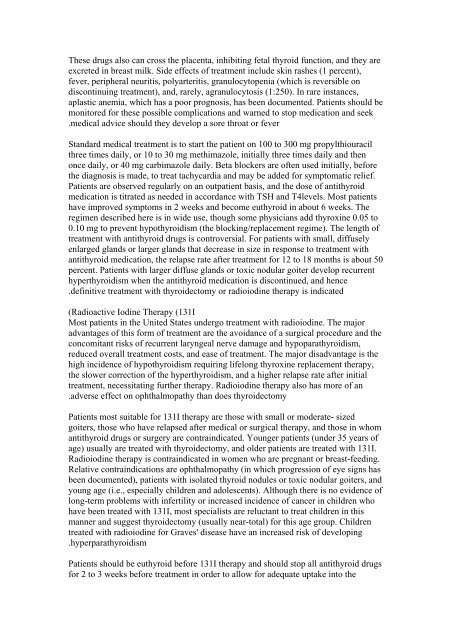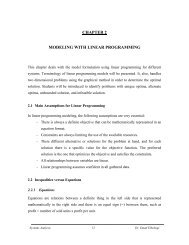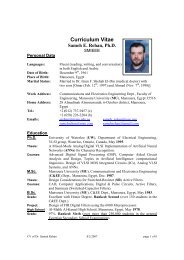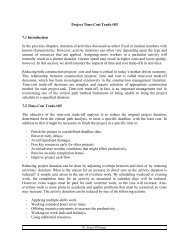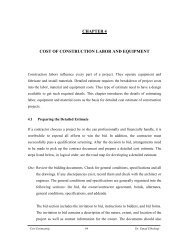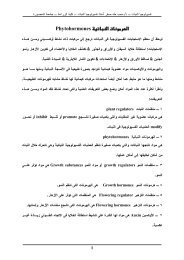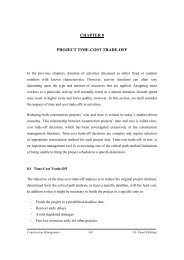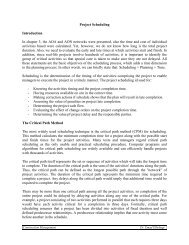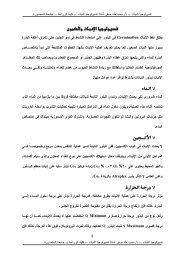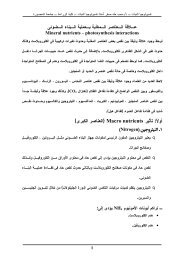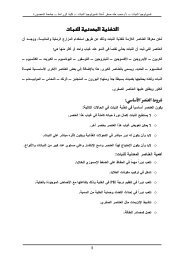Thyroid and Parathyroid
Thyroid and Parathyroid
Thyroid and Parathyroid
Create successful ePaper yourself
Turn your PDF publications into a flip-book with our unique Google optimized e-Paper software.
These drugs also can cross the placenta, inhibiting fetal thyroid function, <strong>and</strong> they are<br />
excreted in breast milk. Side effects of treatment include skin rashes (1 percent),<br />
fever, peripheral neuritis, polyarteritis, granulocytopenia (which is reversible on<br />
discontinuing treatment), <strong>and</strong>, rarely, agranulocytosis (1:250). In rare instances,<br />
aplastic anemia, which has a poor prognosis, has been documented. Patients should be<br />
monitored for these possible complications <strong>and</strong> warned to stop medication <strong>and</strong> seek<br />
. medical advice should they develop a sore throat or fever<br />
St<strong>and</strong>ard medical treatment is to start the patient on 100 to 300 mg propylthiouracil<br />
three times daily, or 10 to 30 mg methimazole, initially three times daily <strong>and</strong> then<br />
once daily, or 40 mg carbimazole daily. Beta blockers are often used initially, before<br />
the diagnosis is made, to treat tachycardia <strong>and</strong> may be added for symptomatic relief.<br />
Patients are observed regularly on an outpatient basis, <strong>and</strong> the dose of antithyroid<br />
medication is titrated as needed in accordance with TSH <strong>and</strong> T4levels. Most patients<br />
have improved symptoms in 2 weeks <strong>and</strong> become euthyroid in about 6 weeks. The<br />
regimen described here is in wide use, though some physicians add thyroxine 0.05 to<br />
0.10 mg to prevent hypothyroidism (the blocking/replacement regime). The length of<br />
treatment with antithyroid drugs is controversial. For patients with small, diffusely<br />
enlarged gl<strong>and</strong>s or larger gl<strong>and</strong>s that decrease in size in response to treatment with<br />
antithyroid medication, the relapse rate after treatment for 12 to 18 months is about 50<br />
percent. Patients with larger diffuse gl<strong>and</strong>s or toxic nodular goiter develop recurrent<br />
hyperthyroidism when the antithyroid medication is discontinued, <strong>and</strong> hence<br />
. definitive treatment with thyroidectomy or radioiodine therapy is indicated<br />
( Radioactive Iodine Therapy (131I<br />
Most patients in the United States undergo treatment with radioiodine. The major<br />
advantages of this form of treatment are the avoidance of a surgical procedure <strong>and</strong> the<br />
concomitant risks of recurrent laryngeal nerve damage <strong>and</strong> hypoparathyroidism,<br />
reduced overall treatment costs, <strong>and</strong> ease of treatment. The major disadvantage is the<br />
high incidence of hypothyroidism requiring lifelong thyroxine replacement therapy,<br />
the slower correction of the hyperthyroidism, <strong>and</strong> a higher relapse rate after initial<br />
treatment, necessitating further therapy. Radioiodine therapy also has more of an<br />
. adverse effect on ophthalmopathy than does thyroidectomy<br />
Patients most suitable for 131I therapy are those with small or moderate- sized<br />
goiters, those who have relapsed after medical or surgical therapy, <strong>and</strong> those in whom<br />
antithyroid drugs or surgery are contraindicated. Younger patients (under 35 years of<br />
age) usually are treated with thyroidectomy, <strong>and</strong> older patients are treated with 131I.<br />
Radioiodine therapy is contraindicated in women who are pregnant or breast-feeding.<br />
Relative contraindications are ophthalmopathy (in which progression of eye signs has<br />
been documented), patients with isolated thyroid nodules or toxic nodular goiters, <strong>and</strong><br />
young age (i.e., especially children <strong>and</strong> adolescents). Although there is no evidence of<br />
long-term problems with infertility or increased incidence of cancer in children who<br />
have been treated with 131I, most specialists are reluctant to treat children in this<br />
manner <strong>and</strong> suggest thyroidectomy (usually near-total) for this age group. Children<br />
treated with radioiodine for Graves' disease have an increased risk of developing<br />
. hyperparathyroidism<br />
Patients should be euthyroid before 131I therapy <strong>and</strong> should stop all antithyroid drugs<br />
for 2 to 3 weeks before treatment in order to allow for adequate uptake into the


